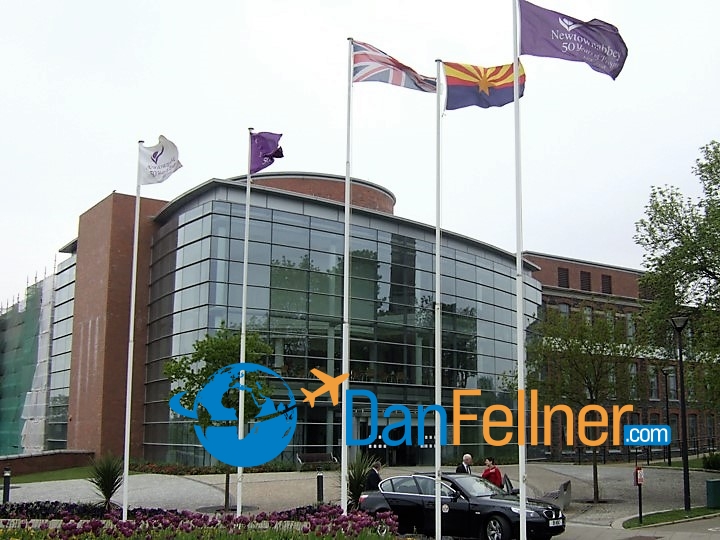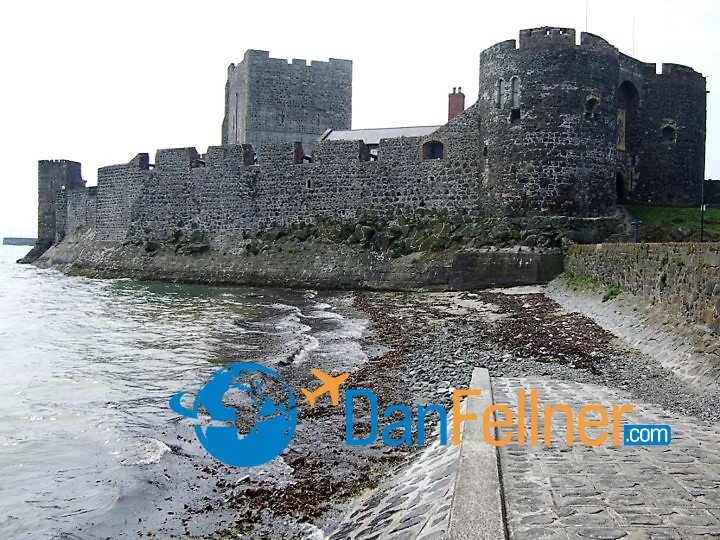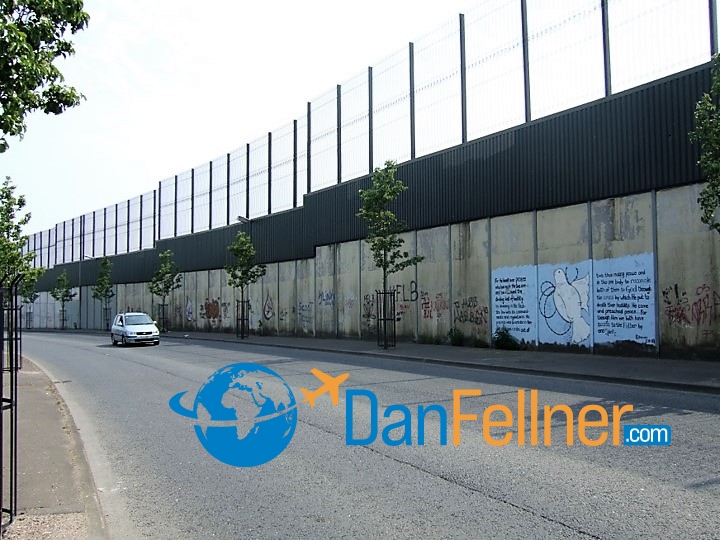Newtownabbey and Gilbert enjoying 10-year Sister City relationship
The Arizona Republic – June 6, 2008
NEWTOWNABBEY, Northern Ireland –They may be sister cities but Gilbert, Arizona and this Belfast suburb look more like third cousins twice removed.
In Newtownabbey, a “Republican” is a far leftist who wants to revolt against British rule, the mayor is a Democrat who represents the right, and people drive in cars with steering wheels on the right down the left side of the road.
And no matter what time of year, you better bring a sweater and umbrella.

The author with Gilbert Mayor Steve Berman (left) and Newtownabbey Mayor Nigel Hamilton (center) at Newtownabbey’s Civic Center.
But while all this can seem a bit disorienting at first to an Arizonan, I was more than compensated with beautiful scenery, historic sites and the hospitality and warmth of the locals.
I recently visited this semi-rural town of 85,000 people on the shores of Belfast Lough during a stop in Northern Ireland on a cruise around the British Isles.

The Arizona flag flies next to the Union Jack at Newtownabbey’s Civic Center.
My trip to Newtownabbey happened to coincide with the visit of a 14-person Gilbert delegation, including Mayor Steve Berman, Councilman Dave Crozier, and members of the Gilbert Promotional Corporation, the group which stages Gilbert Days each year.
Along with Newtownabbey Mayor Nigel Hamilton and other local dignitaries, we all had breakfast at Mossley Mill, Newtownabbey’s Council Civic Center, which used to house a 19th century mill that converted flax into yarn. Over scrambled eggs and ham, we talked about the 10-year relationship between the sister cities and why officials from both places find it worthwhile to use personal vacation time to repeatedly cross the Atlantic at their own expense.

Sentry Hill, a 19th century farmhouse and one of Newtownabbey’s leading tourist destinations.
Berman, who has been to Newtownabbey three times and developed a close friendship with his counterpart Hamilton, brought a 60-pound box of letters from Gilbert schoolchildren to deliver to their Northern Irish pen-pals.
When I asked Berman to describe the biggest benefit of the sister-city relationship, he pulled his digital camera out of his pocket and showed me a photo he took the prior day of an anti-American mural in Belfast.
He described the Gilbert delegation as unofficial “ambassadors” for their country, who help dispel anti-American perceptions by appearing in schools, marching in parades and meeting with the locals, all while donning cowboy hats and Western wear.

The 800-year-old castle in Carrickfergus, a town that borders Newtownabbey.
“Everybody loves a cowboy,” he said.
Crozier, who initially opposed the sister-city arrangement, is now one of its biggest proponents, saying both sides benefit by the sharing of ideas. For instance, he said Gilbert can learn from Newtownabbey’s expertise in saving fuel. It’s a matter of necessity here, as a gallon of gas costs more than $10.

A mural in a Belfast Protestant neighborhood.
As for Hamilton, he’s traveled twice to Gilbert, where he rode a horse during Gilbert Days, spoken at schools, and enjoyed the “sharing of cultures.”
One of the biggest differences between the two cultures is that Newtownabbey places much more emphasis on formalities and tradition. Hamilton is introduced at events as “his worship,” his wife is known as the “mayoress,” and he wears a huge chain adorned with the town’s coat of arms around his neck at official functions, something Berman said probably wouldn’t go over too well in more laid-back Gilbert.
“They’d hang me with one if I wore it,” he joked.
Most Americans know little about Northern Ireland, other than hearing about the violence between Catholics and Protestants that claimed thousands of lives, known here simply as “The Troubles.”
Newtownabbey was not immune from the violence. In fact, the Irish Republican Army bombed a police station here in the 1990s. But a cease-fire has been in place for 10 years and violence across the country has greatly diminished.
Our gracious host, Campbell Dixon, who once had to worry about “The Troubles” on a daily basis when he served as Newtownabbey’s police chief, took us back to Belfast.

A mural in a Belfast Catholic neighborhood.
Along the way, we stopped at Sentry Hill, a beautiful 19th century farmhouse and one of Newtownabbey’s leading tourist destinations. We also visited an 800-year-old castle in neighboring Carrickfergus.
Once in Belfast, Dixon showed us several of the city’s famed murals, vivid paintings – often militaristic — on gabled houses that proclaimed the Protestant or Catholic loyalties of the neighborhood. They are stark reminders of a time not too long ago when riots, bombings and shootings were fairly commonplace in Northern Ireland.
“We’ve come a long way,” Dixon said. “But it took a lot of pain to get here.”



